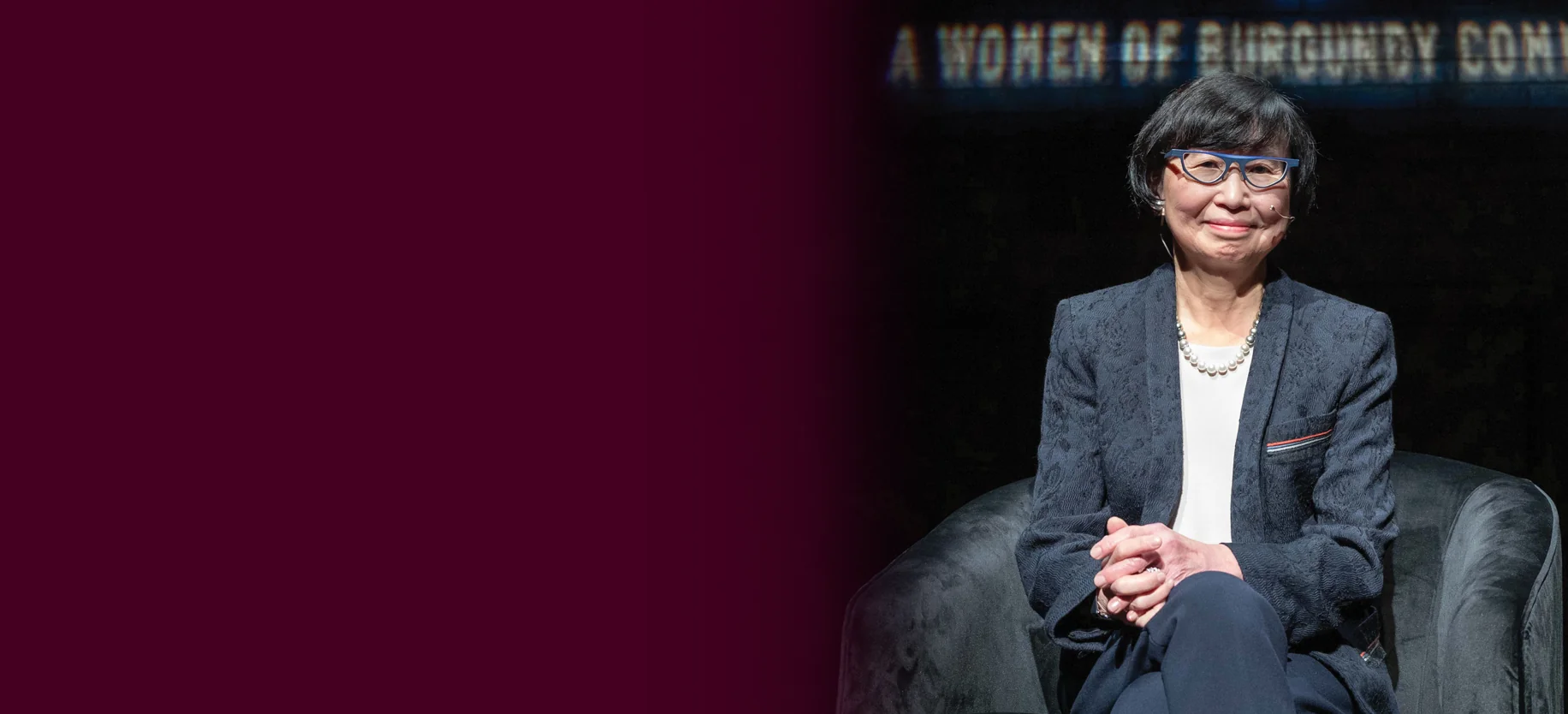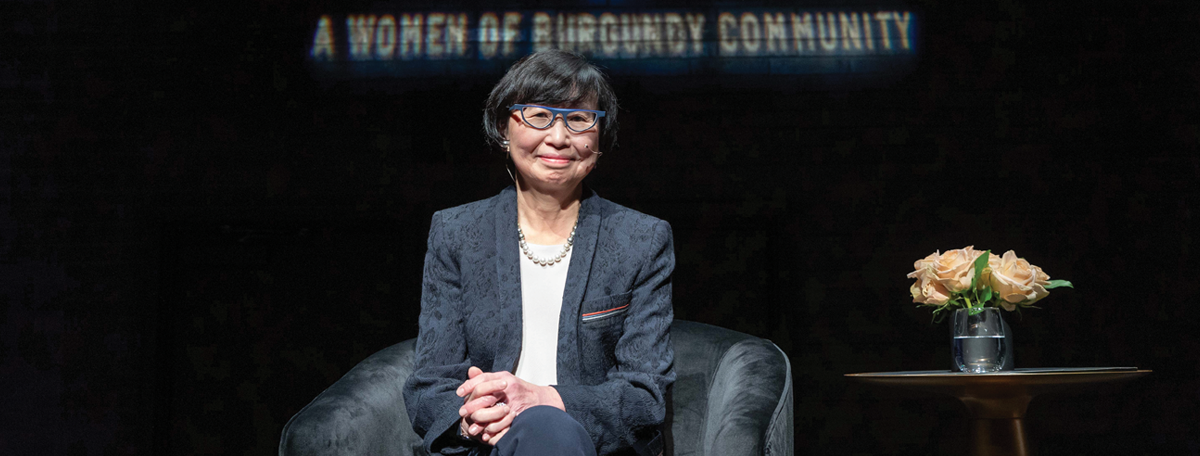In November 2021, the Women of Burgundy hosted Janice Fukakusa, chancellor of Toronto Metropolitan University, corporate director, not-for-profit director, and former chief administrative officer and chief financial officer of Royal Bank of Canada. In conversation with Burgundy vice presidents Lisa Ritchie and Anne Maggisano, she discusses the lessons learned from crises management through her experience at RBC as an executive through the 2007–2009 financial crisis and at Brookfield Asset Management, Cineplex, and Loblaw as a director through the early days of the coronavirus pandemic.
Anne Maggisano (AM): Let’s start with Royal Bank of Canada, where you had an impressive career for many years. You spent much of that time in executive leadership roles and you would have had to navigate through many crises, including the Tech Bubble of 1999–2000 and the Financial Crisis of 2007–2009. What lessons did you learn that can inform how business leaders might be strategic and build resilience today?
Janice Fukakusa (JF): As I think back on those crises, it was all about dealing with the issues at hand—only when you survive the moment can you fulfill your long-term agenda. The Tech Bubble was about over-investment in one sector, and we ended up with a lot of companies in that sector not doing well. As a result, the equity markets sank. So what do you think happened to the credit markets? The bank’s capital position became key as it took big write-downs. But the major thing about this crisis, and you will see this in the other crises I mention, is that earning back credibility and earning back trust are paramount when you are a financial services organization.
The Financial Crisis was a crisis across the financial sector—quite different from a credit crisis. It was more of a systemic crisis, but again it was about stability and credibility. The whole issue with banks was liquidity. It was important that the money kept flowing. We watched banks going bankrupt in the U.S., strong regional banks, and I thought: This is happening over there, and they are not dealing with it. We had to look at our own bank, look at our liquidity, and fund everything for as long as possible. We had a lot of dialogue with the Bank of Canada and regulators about how to solve for the rest of the system.
When you deal properly with the short-term, the long-term strategy unfolds. When all the jurisdictions started to act during the Financial Crisis, Canada was recognized as being ahead of the curve. And I think that is because of the fewer number of players and our ability to come together. I knew we had to raise equity at RBC—it would be a good show of confidence. We had not raised equity at the bank for decades. It was December 2008 when everything became quite serious. We had just released RBC’s results, where we wrote off billions of dollars in credit losses. But we were in a strong capital position, nothing near the brink of survival. It was a Friday when the CEO came to see me after he finished his board meeting and he said, “You can raise equity. You have the weekend to do it.” Before the close of the market the following Monday, we announced our equity issue, and then I watched our stock price decline, which was not pleasant. But then it started to recover within 45 minutes, if my memory serves me right. Taking decisive action early pulled us out of the recession and into a better economy, particularly in Canada, on a quicker basis than the rest of the world.
And when you look at the COVID-19 pandemic, which is another six-sigma event, this is not just contained in one sector, it is the whole world. I would argue that the same decisive action took place, but the speed of change has really increased. If you look at the Fed [Federal Reserve Bank] and their reaction in the Financial Crisis, it took three months for them to put the TARP [Troubled Assets Relief Program] in place to provide liquidity to the credit markets. At the beginning of COVID-19 pandemic, when liquidity in the markets began to dry up, it took less than three weeks for the Fed to act. It is a remarkable thing, the speed of execution. Some of that has to do with the times we live in and the impact of technology.

AM: Crises often expose management for not practicing fundamental principles. For example, time and again, we have seen that leverage works until it doesn’t. Why do you think business leaders lose sight of these fundamental principles for business success, and at what cost?
JF: What happens is that you become obsessed with quarterly earnings and short-term gains because there is a focus on quarterly performance. You lose sight of the fact that most investments you make are long term, and they take longer than a quarter to be successful. Leverage is a good example because it is a bit like a drug; you can leverage and increase your revenue, your sales, your market share, that sort of thing, but it is not sustainable in the long term unless you have done the homework required. If you look at interest rates [in 2021] and the cost of money, it is easy to become overextended because the burden is so low, but you need guard rails in place due to the potential for higher costs in the future.
Lisa Ritchie (LR): In June 2020, you were appointed to the board of Brookfield Asset Management. Brookfield invests in long-term assets like infrastructure, private companies, and real estate. I would imagine the company was not immune to the challenges of the COVID-19 crisis. What were the priorities of leadership to ensure resilience and sustainability of the business?
JF: The COVID-19 crisis has played into Brookfield’s investment thesis about investing for the long term. If you look at segments that are really charged now—like the sustainable segments, the reusable and repowering segments, plus real estate—they are very strong. Brookfield has just gotten into a new segment, long-duration insurance companies. When you pair that with their investment expertise, the management of future liabilities is something that is core to what they do.
But what you also saw in the crisis was a range of opportunities for Brookfield. The market was reflecting the general fact of low leasing levels, offices were empty, and there was no one shopping in the malls. Therefore, Brookfield’s valuation went down considerably, reducing the ability to attract capital. So, one option was to look at privatization. They have just completed that with the property company.
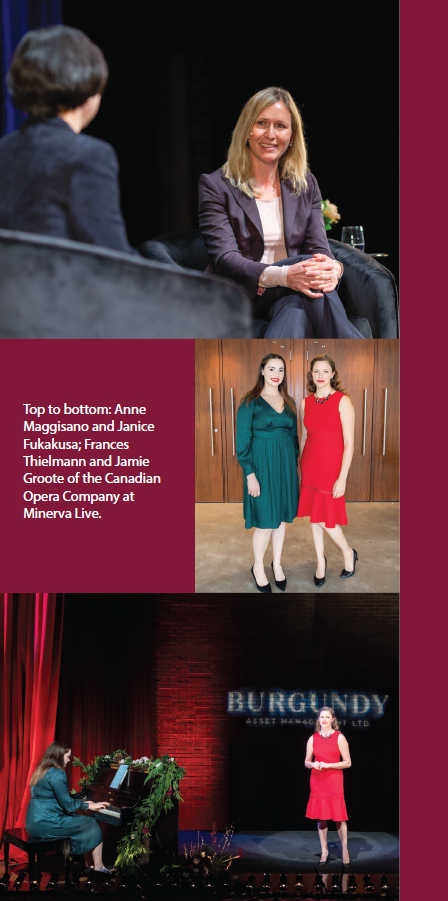
LR: The pandemic catalyzed a continuation of low interest rates, which is increasing the demand for the products you refer to, such as investments in infrastructure, so that people can achieve more yield. What are the challenges of managing that demand, and is it dovetailing with economic recovery?
JF: It is dovetailing to a certain degree because putting more money into infrastructure, into renewables, these sorts of ventures, is positive net-net in terms of creating employment, for example. From a general economic perspective, that is a good thing. Of course, the cost is increasing because the demand is higher.
You have to do a lot of due diligence to make sure that the projects you are funding are in your sweet spot, meaning you have the expertise. Brookfield’s whole business model is hands-on—they roll up their sleeves, do their own analysis, and invest in things they are familiar with. And they have long-standing relationships in different countries. They have always operated in Brazil. They have expanded to Asia. Some of the economies are growing at different paces than others, so you achieve diversification, but the risk of low interest rates and people moving into illiquid and specialized asset classes is not just about the staying power of the investment. It is about having the expertise to manage that sort of risk.
AM: Could you speak to the value that diversification brings to the business?
JF: One of the things that is important to Brookfield is to be on the ground in the regions where they invest, whether that be in real estate or infrastructure projects. During the pandemic it was about the impact of government regulations in terms of the return to physical premises. And the return of different economies and how that was being dealt with in different jurisdictions, which can inform others. It is of great value when making an investment decision to have the perspective of people on the ground that understand what is going on locally. I find that discussions around the board table are very rich because the information shared is practical and at the ground level.
I will give you an example of a recent board discussion about China. We went through all the crises that have happened globally over the years. We know that the next one is geopolitical risk. Getting a view from the people that are near China and their view of what China is doing, and how it coincides with what has happened in Western markets in the past, is important. You can then compare this information with the view we have here about what China’s actions might represent, and then adding in the views from the ground in Europe and here in North America, you can see how they all come together and it is remarkable.
AM: You also serve on the board of Cineplex. When the pandemic hit and the lockdowns ensued, this is a business where box office revenues would have dropped to zero literally overnight. How did the board and management lead Cineplex through these extreme conditions?
JF: It is really difficult when you have 14 months of zero revenue, and you have big spaces that can’t be repurposed for anything. When you look at what is core to staying in business, you must deal with the present. We focused on liquidity and making hard decisions around staffing, around leasing out premises, and dealing with landlords. And you look at liquidity in terms of months, quarters, and years—how long do you think you can last, and how do you preserve that liquidity? You also have to think about the long term and have commitment to the model of exhibition. People were saying right at the beginning of COVID-19 that no one was going to want to go to the movies, that they would just watch content at home on TV. But as economies reopened, the theatres were sold out.
So, the issue is: for how long do you get the exclusive windows to exhibit a movie, and what are the film studios going to do? During the pandemic lockdowns, studios were on the fence, and you saw many, like Disney, release their movies online. But they also held back a lot of content, and that is why the movie pipeline is so strong now. The exhibition windows are shorter, but this gave Cineplex the chance to reconfigure and grow their digital and streaming lines. They also introduced a subscription model, which provides a recurring source of revenue. But the critical thing is always this: to be where we are today, we must have the liquidity.
LR: Do you think that the future for Cineplex holds the in-person cinematic experience, as well as streaming, subscriptions, and maybe other models, more like an omnichannel business?
JF: Definitely. What the studios are saying is exhibitions are important, but the windows are shorter. And what that means is you can still have movies at your theatre, but it is going to be available digitally maybe within a month. Remember the other participants now in the movie business are companies like Amazon and Netflix. They are major producers who also have a streaming platform, but they are thinking about using exhibitions the same way studios do to grow their streaming. New revenue sources and business models will surface because there is a need for omnichannel, and that means significantly more competition.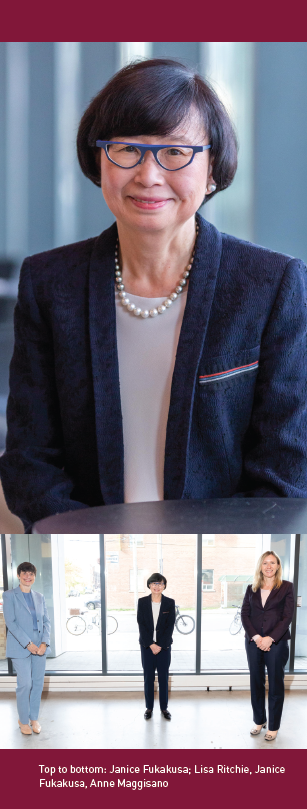
LR: In stark contrast to Cineplex, the large Canadian retailer Loblaw would have experienced an increase in demand for its products, grocery, and pharmacy during the pandemic. From your vantage point on the board, what were the impacts of the pandemic on the business?
JF: First, the main concern when you are running a large retail format is to make sure that your environments are safe. At the beginning of COVID-19, it was about getting PPE, hand sanitizers, and everything that you needed to ensure safety. Right away, you would have seen that expenses went up even though sales increased. Then there were supply chain disruptions, and there was also the fact that you had limited hours.
So, there were a few obstacles at the beginning, but then it was business as usual, though restricted. Loblaw had an e-commerce platform for grocery, and it became a big focus because more of their customers started using it. And remember that Loblaw has approximately 70 per cent market share across Canada, and they have a huge concentration in the cities, which would be where the demand is for e-commerce. That has developed into quite a positive platform for Loblaw.
When you look at the impact of inflation, remember that grocery is one of the industries that moves very quickly with inflation because the inventory is purchased almost every day. And do we really remember what we paid for a head of lettuce the week before? So, in periods of higher inflation, the grocery business does even better.
LR: I want to ask you about the corporate social responsibility at Loblaw where there are extensive programs in place. Could you comment on how they view this aspect of the business?
JF: ESG [environmental, social and governance] is very topical because Loblaw is a consumer company, and it has also been front of mind for management for years. Loblaw always likes to be ahead, they manage for the long term, especially with ESG. It is important and high on the agenda.
What ESG does is drills down into activities, metrics, time frames. The statistics that management is focused on are related to things like usage of plastic. You will see them introducing bring-your-own-container solutions. We had a tour of their stores a couple of weeks ago and looked at the bakery products that are packaged in transparent plastic. Loblaw is going to transition to a paper-based product and wrap, which is greener. It may be a little bit more expensive, but if you take the cost on a net-net basis, probably not. And then energy and carbon are a little bit more difficult because of the timeframe and footprint. There is no real standardization of how to measure progress.
A major issue that is on Loblaw’s radar screen is supplier adherence to ESG, which is difficult to track because they have thousands of suppliers located everywhere, not just in Canada.
AM: Let’s turn to the topic of women. Would you mind sharing what it was like for you as a woman on Bay Street in the early days?
JF: I will give you some incidents and then explain my theory and practices around them. It is a different experience to be a woman on Bay Street, even more difficult when you are racialized, and you are short. I would walk into events—and I am sure this has happened to you two—and if I was with a male colleague, immediately people would go up to the male because they assumed I was subordinate. I have been asked to get drinks at receptions and had to point out that was not why I was there. These sorts of things happened but, for me, it was not about getting mad, but rather it was about leading with your experience, your learning and your credentials, being the best at what you do, and leading with that knowledge.
When I got my first promotion to executive, I got a call from the CEO and he said to me, “It is fantastic that you have this promotion. I know you are going to do a good job.” And then he said to me, “And for your next job, you have to work outside of Toronto. You should go to British Columbia and run a district.” He had my career all mapped out. The problem was this: I had just had my son, and I had this whole support network in Toronto. With both my husband’s and my careers, I could not see that we were just going to pick up and move. I was quite shocked that my CEO had this all planned out, so what I said was: “Thank you very much. That’s great, but my focus is doing a really good job in this position.”
I thought saying this would result in me having no career progression, so I decided I had better make what I was doing as interesting as possible. I worked on building a breadth of experience. I spent the first 10 years of my career in corporate banking, and then I moved on to a role as the Chief Internal Auditor, so I got to know the other businesses. Then I moved on to the Chief Operating Officer of the retail platform, which was new to me. And it just so happened that I was progressing in my career, but I never counted on it. My priority was to be totally, totally interested. And for me, that is about learning about different things and having different experiences. The focus has to be on having a fulfilling work experience and enjoying it.
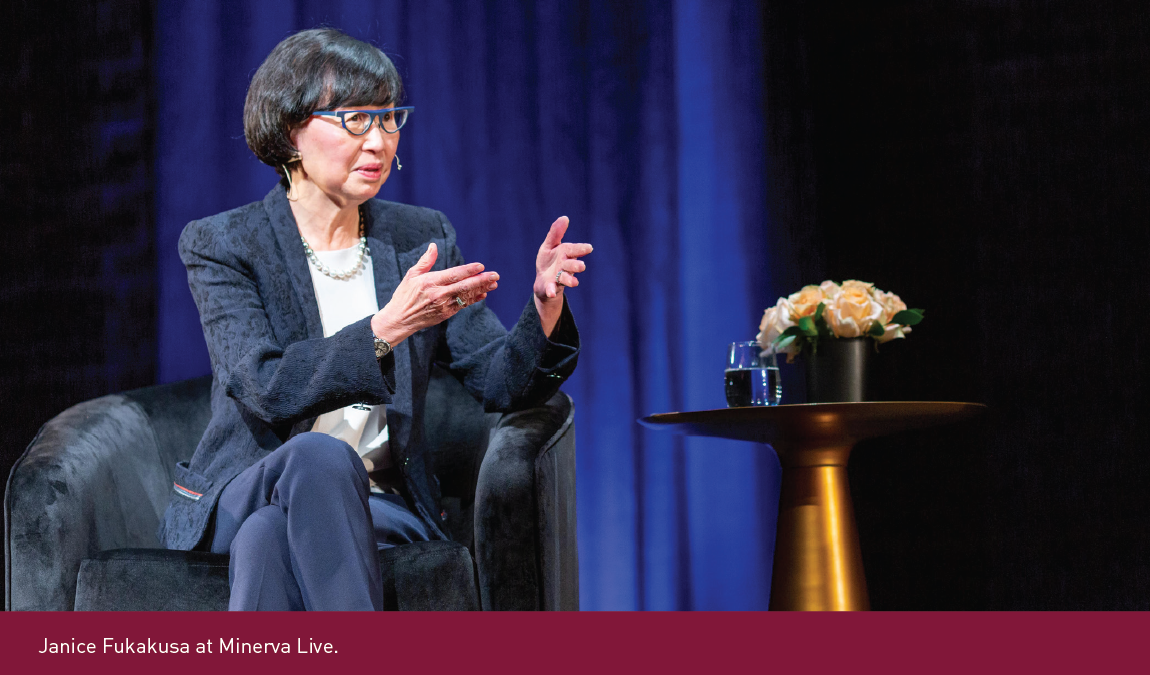
LR: When you think about diversity, are you seeing progress taking place? What more should we do?
JF: I do see progress taking place because I see visible diverse leadership in some of the major public companies in Canada. It is not enough, and it is never going to be enough until no one is talking about it. If you have one company where you are still talking about it, it is not enough.
One of the critical things, which I always promote, is that you have to be able to look up to see it or you will never strive for it. What I mean is that people can talk about diversity and inclusion, but if you cannot see it in your senior ranks, how can you ever go for it? When you see it in your senior management, you think: Oh, I can do that too. I belong there. People from diverse backgrounds could have excellent skill sets and knowledge but if they cannot see themselves represented in leadership, it is hard for them to go for it.
It does not matter where you sit in an organization or what your current role is. You can be part of fostering diversity and inclusion by promoting other women, mentoring them, and sponsoring them. And that is happening more and more. But you can never take your eyes off the ball.
It is so much easier if you start with diversity. After I retired from RBC, I was working for the Canada Infrastructure Bank, set up by the government. The mandate for the Board of Directors was to have diversity—geographic, gender, racial, the full breadth. We started from scratch and had many applicants from across Canada, and we ended up with a board that was comprised of six women and five men. Everyone was different, and not one person on the board knew more than one other person. Think about that. We had the best conversations because the directors did not know each other, so they had to listen to what the other person was saying. Isn’t that an epiphany, having to listen to what other people are saying because you can’t predict it? The conversations and discussions were pointed, fact-based, and fast paced. What are the chances of that culture being maintained? Pretty high, because when you start like that, it will be sustained in the appointment process. To me, that was a great example of what is possible and speaks to progress being made.
AM: What would you advise women in terms of how we can have agency over our career and our lives?
JF: It all comes back to focusing on the journey and not the destination. There are three things that are important. The first is to always learn and be curious. It could be learning a skill set, or learning about a new industry, or learning about how people work. The second is determination, which will lead to accomplishments. And the third is resiliency. You have to learn to admit you make mistakes and move on. The minute you can admit to yourself that you made a mistake, own it, and move on, it builds resiliency. If you have those three things, I think you will engage in a fulfilling career, because you will not be focused on the destination. You will be focused on: How do I improve? How do I learn from this? And during COVID-19, there is one other thing I have learned, and that is to be kind to other people and to yourself.
This post is presented for illustrative and discussion purposes only. It is not intended to provide investment advice and does not consider unique objectives, constraints or financial needs. Under no circumstances does this post suggest that you should time the market in any way or make investment decisions based on the content. Select securities may be used as examples to illustrate Burgundy’s investment philosophy. Burgundy funds or portfolios may or may not hold such securities for the whole demonstrated period. Investors are advised that their investments are not guaranteed, their values change frequently and past performance may not be repeated. This post is not intended as an offer to invest in any investment strategy presented by Burgundy. The information contained in this post is the opinion of Burgundy Asset Management and/or its employees as of the date of the post and is subject to change without notice. Please refer to the Legal section of this website for additional information.
